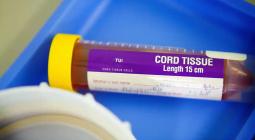Decontamination of landfill waste leads to increase in toxic chemicals, says study
Exclusive: Researchers find treatment plants designed to clean up leachate liquid waste boost levels of banned PFAS
Processes intended to decontaminate noxious liquid landfill waste before it enters rivers and sewers have been found to increase the levels of some of the worst toxic chemicals, a study has shown.
Landfills are well known to be a main source of PFAS forever chemicals – or per- and polyfluoroalkyl substances – but the new study shows that the treatment plants designed to clean up the liquid waste can instead boost the levels of banned PFAS such as PFOA and PFOS, in some cases by as much as 1,335%.
PFAS are a family of about 15,000 human-made chemicals with nonstick properties that are used in a wide range of consumer products and industrial processes. They can take thousands of years to break down in the environment and the handful that have been studied in detail have been found to be toxic, with PFOA and PFOS linked to cancers and other diseases. PFAS pollution is widespread, having been found in the remotest parts of the world, and it is thought every US citizen has it in their blood.
Using data from an Environment Agency investigation into landfill liquid waste, which is known as leachate, Dr David Megson from Manchester Metropolitan University, who co-authored the study found “that instead of removing the banned chemicals PFOS and PFOA our treatment plants are actually creating them … likely being formed from the transformation of other PFAS within a chemical soup”.
Megson is concerned that the understanding of what is going on in the UK at landfill sites is poor and that monitoring “only looks at a few specific PFAS, so we are only getting a tiny snapshot of what is actually out there and what impact it may be having”.
The study looked at the leachate from 17 historical and operational landfills, just a fraction of the total across the country. Pippa Neill from the Ends Report, a co-author of the study, said that “with potentially hundreds of landfill operators legally allowed to discharge their treated leachate into the environment” there is an “urgent need” for more research so that PFAS can be disposed of properly.
There is also “an urgent need to ban all PFAS globally, whether through the existing Stockholm convention or a new global treaty on PFAS”, according to Dr Sara Brosché, an adviser at the International Pollutants Elimination Network. “PFOS and PFOA were known by the producers to be toxic from the beginning of their use in consumer products, and they continue to poison the environment and our bodies many years after they have been regulated. A multitude of PFAS are now in use with little or no publicly disclosed information about where they are used or their health impacts.”
In an attempt to halt contamination, the European Commission is considering a groundbreaking proposal to regulate thousands of PFAS as one class, something that is being fiercely contested by the PFAS industry. The UK has not followed the EU’s lead, prompting dozens of the world’s leading PFAS experts to write directly to UK ministers on Thursday, urging the government to “take a more ambitious approach and follow the science … Regulating all PFAS as one group is the only way to tackle PFAS pollution”.
Dr Shubhi Sharma, a scientific researcher at the charity Chem Trust, said: “PFAS emissions from landfills can contaminate the surrounding groundwater and surface water and are linked to serious health risks, such as kidney and testicular cancer. The UK government must take immediate action to regulate this entire group of PFAS.”
Dr Daniel Drage, an associate professor at the University of Birmingham, is also concerned that the same thing is happening in a range of treatment systems.
“It’s paramount that we identify other treatment processes that remove PFAS from leachate prior to its release into the environment,” he said. “This is a multibillion pound global public health issue and likely to go beyond government expenditure. I would suggest that industries that have profited substantially from the use of PFAS over the last half a century have a moral duty to protect future generations from the consequences of these uses.”
A spokesperson for the Environment Agency confirmed it is “working closely with the landfill industry” and that it is “carrying out further investigations about PFAS within the landfill waste mass, treatment processes, and on the consequences of the treatment that leachate undergoes.”
Climate breakdown is likely to exacerbate pollution from landfills, according to Prof Kate Spencer from Queen Mary University of London. Particularly “for historic landfills that are not lined these PFAS chemicals can enter surface and groundwaters with potential consequences for ecological and human health. This is likely to increase as the severity and frequency of flooding increases”, she said.
Cover photo: PFAS, often found in landfills, are a family of about 15,000 human-made chemicals and can take thousands of years to break down in the environment. Photograph: Nature Picture Library/Alamy




